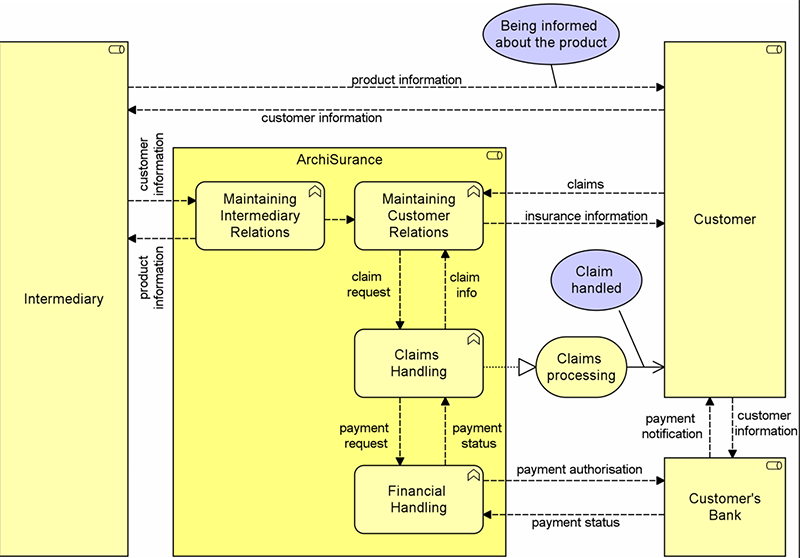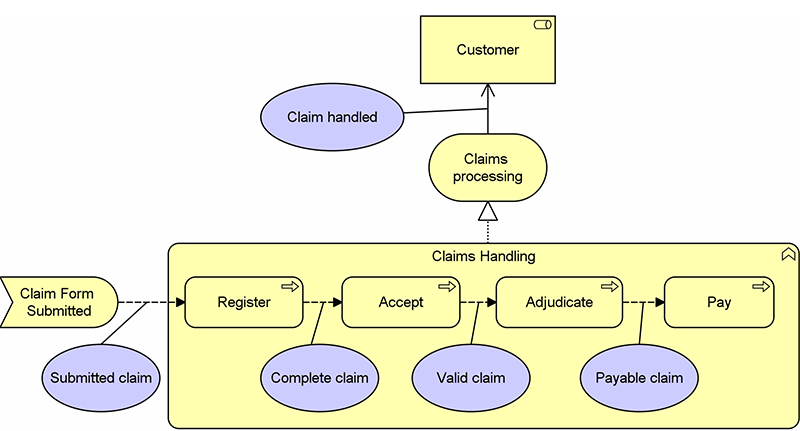In several previous blogs, we have outlined how you can use ArchiMate 3 in the context of business architecture and strategy development, such as Capability-Based Planning, and combining it with the Business Motivation Model, the Business Model Canvas and the Balanced Scorecard. In this blog, we continue with the series, looking at how you can describe value chains, value streams, and value networks.
Value mapping is a useful technique in business architecture. It provides insight into the value produced by the various activities of the organization, how this contributes to its overall value proposition, and how this value is exchanged with other parties in a value network.
The classical example of this is the Value Chain defined by Porter, which divides the activities of an enterprise in value-creating and supporting, and subdivides the former in the typical stages of a production process, with inbound logistics, operations, outbound logistics, marketing and sales, and service. More recent approaches such as e3value, the Value Delivery Metamodel (VDML) and the BIZBOK take a more general stance and also look at value exchange in the broader ecosystem. The table below provides a general mapping aimed at supporting most of these approaches.
| VALUE MAP | ARCHIMATE |
| Value Proposition | Product + Value |
| Value Item | Value |
| Value Stream | Business Process (highest-level) |
| Value Stage, Activity | Business Process or Function |
| Value Exchange | Flow + associated Value |
| Actor, Organization Unit | Business Actor |
| Role | Business Role |
| Collaboration | Business Collaboration |
| Capability | Capability |
The mapping shown in this table mainly uses ArchiMate’s business layer concepts to express value maps. Remember that ArchiMate uses the same concept for all levels of granularity, i.e., a business process can express an entire value stream, a value stage in that stream, or activities within such a stage, down to the smallest individual task. Furthermore, this mapping uses value elements associated with products and with flow relationships to model the value propositions and exchange of value along the value chain, stream or network. This maps well onto typical Porter Value Chain models. Alternatively, for a somewhat more abstract view, we may map a value stage to a (named) grouping of capabilities in ArchiMate, and relate these groupings via flow relationships with associated value elements.
A partial Value Network containing several Actors, Value Exchanges and Value Items can be seen in the next figure (Figure 1).

The following figure (Figure 2) elaborates the Claims Handling business function from the previous figure, and shows a Value Stream and Value Exchanges between its different stages.

Using ArchiMate helps you to express and analyze the business model of your organization and how it produces stakeholder value. It also lets you focus on the important value-producing activities in strategic planning and change.